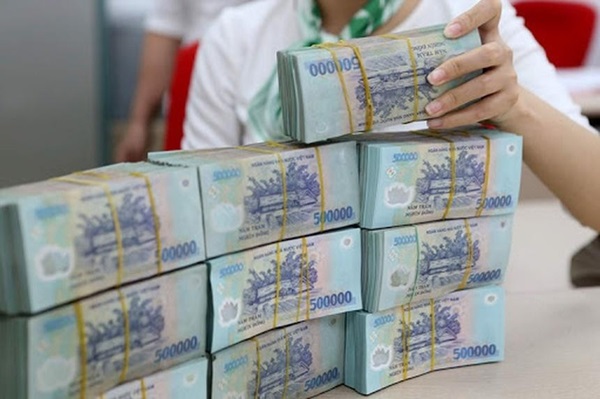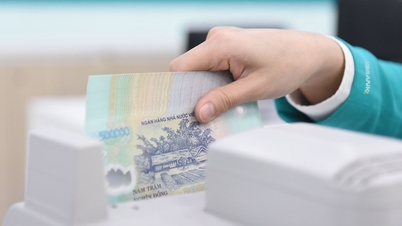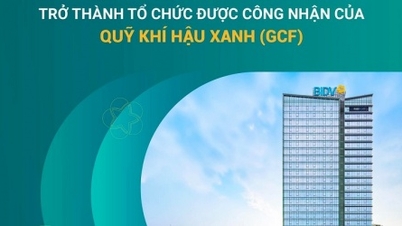Continuously increasing capital
VietABank (code: VAB) closed the shareholder list on August 15 to issue additional shares to increase capital from equity capital. The bank plans to issue more than 276.4 million shares to existing shareholders, at a ratio of 100:51.19, meaning that a shareholder owning 1 share will receive 1 right and for every 100 rights, will receive 51.19 additional issued shares. The number of decimal shares (if any) will be canceled.
The issuance capital is the accumulated undistributed profit as of December 31, 2024 (more than VND 2,604 billion) and the Charter Capital Supplement Reserve Fund (more than VND 160 billion). After the issuance, VietABank will increase its charter capital by VND 2,764 billion, from nearly VND 5,400 billion to VND 8,164 billion.
OCB (code: OCB) has also set August 11, 2025 as the last registration date to close the list of shareholders to exercise the right to receive shares issued due to capital increase from equity. Accordingly, OCB plans to issue nearly 197.3 million shares to increase equity capital from equity with an issuance rate of 8% (shareholders owning 100 shares will receive 8 new shares).
The source of implementation is from the owner's equity as of December 31, 2024, determined according to the audited separate and consolidated financial statements after setting aside funds as prescribed. Previously, OCB closed the shareholder list on July 18, 2025 to pay 2024 cash dividends at a rate of 7%. The date of payment of 2024 cash dividends (payment date) is August 7, 2025. This is the first year OCB has paid cash dividends since being listed on the stock exchange.
SHB (code: SHB) has recently approved the implementation of the Plan to increase charter capital from the source of 2024 dividends in shares for existing shareholders. Previously, SHB's capital increase plan was approved by the State Bank. According to the plan, SHB will issue a maximum of nearly 528.5 million shares, equivalent to an issuance rate of 13% of the total outstanding shares (shareholders owning 100 shares will receive an additional 13 shares). These additional issued shares will not be subject to transfer restrictions.
The capital will be used to issue shares to pay dividends from after-tax profits after setting aside funds in 2024. It is expected that after the successful issuance, the bank's charter capital will increase by nearly VND5,285 billion, from VND40,657 billion to VND45,942 billion.
Previously, SHB completed paying 2024 cash dividends at a rate of 5% on June 20, 2025. With nearly 4,066 billion shares in circulation, SHB spent VND 2,033 billion to pay cash dividends to shareholders.
 |
| Many banks increase charter capital. |
MSB (code: MSB) has also approved the implementation of increasing charter capital in 2025 through issuing shares to pay dividends to shareholders. According to the plan, MSB will issue a maximum of 520 million shares, equivalent to an issuance rate of 20% of the total outstanding shares. These additional issued shares will not be subject to transfer restrictions. It is expected that after the successful issuance, the bank's charter capital will increase by VND5,200 billion, from VND26,000 billion to VND31,200 billion. The expected issuance time is in 2025, after approval from the State management agency.
In mid-July 2025, Nam A Bank (code: NAB) announced information on the results of the share issuance to increase equity capital from equity capital in 2025. Specifically, the bank issued more than 343 million shares to 7,502 shareholders, increasing charter capital from nearly VND 13,726 billion to VND 17,157 billion, corresponding to the number of outstanding shares increasing from more than 1.37 billion shares to 1.71 billion shares. The issuance end date is July 11, 2025. The expected time for transferring shares is in August 2025.
The issuance source is from equity capital (undistributed profit after tax and other funds as prescribed by law as of December 31, 2024 based on the audited consolidated financial statements of 2024). In addition, Nam A Bank also plans to issue 85 million shares, increasing its charter capital by VND 850 billion. The issuers are employees of the bank and its subsidiaries. The expected offering price is VND 10,000/share, equal to the par value...
Meet capital adequacy ratio
Similarly,VIB (code: VIB) has just announced a change in the number of voting shares from nearly 2.98 billion to more than 3.4 billion, after completing two stock issuances including stock dividends and issuance of bonus shares to employees (ESOP), thereby officially increasing its charter capital to more than VND 34,040 billion, equivalent to a capital increase rate of 14.26%. Specifically, VIB has issued more than 417 million bonus shares to 33,684 shareholders at a rate of 14% (equivalent to 14 additional shares for every 100 shares). The capital for implementation is drawn from the charter capital supplementary reserve fund and undistributed after-tax profits until the end of 2024.
After distributing more than 417 million bonus shares to shareholders and issuing ESOP to more than 1,300 employees, VIB's charter capital increased to more than VND30,040 billion. In addition, the bank also successfully distributed 7.8 million ESOP shares to 1,372 employees. Because the actual number of recipients was lower than the original list of 1,406 people, 107,337 shares were revoked and the right to continue to be distributed to the employees on the list.
The remaining odd shares from the two issuances (a total of 10,473 shares) were privately offered by VIB to individual Truong Le Ngoc Tram at a price of VND 17,034/share, raising nearly VND 180 billion. Previously, VIB was approved by the State Bank to increase its capital by nearly VND 4,249 billion in the form of issuing shares to existing shareholders (nearly VND 4,171 billion) and ESOP (VND 78 billion). The new shares are expected to be completed before September 30, 2025.
Associate Professor Dr. Nguyen Huu Huan, University of Economics, Ho Chi Minh City, commented that the above results demonstrate the determination of banks in applying international standards, contributing to increasing efficiency and ensuring capital safety. Compared to Basel II, Basel III has many new and more stringent requirements. The implementation of Basel III also requires large financial resources as well as careful preparation from banks.
The Governor of the State Bank of Vietnam (SBV) has just issued Circular No. 14/2025/TT-NHNN regulating capital adequacy ratios for commercial banks (CBs) and foreign bank branches. Circular 14 guides the determination and minimum values of capital adequacy ratios that banks must maintain, including core capital ratio tier 1, tier 1 capital ratio and minimum capital adequacy ratio.
Accordingly, commercial banks without subsidiaries and foreign bank branches must maintain individual capital adequacy ratios including: minimum core capital ratio of 4.5%; minimum tier 1 capital ratio of 6%; and minimum capital adequacy ratio of 8%. For commercial banks with subsidiaries, individual and consolidated capital adequacy ratios must also meet the corresponding levels: minimum core capital of 4.5%, minimum tier 1 capital of 6% and minimum capital adequacy ratio of 8%.
The Circular first introduces regulations on capital buffers including capital conservation buffer (CCB), countercyclical capital buffer (CCyB) and capital buffer for systemically important commercial banks. Specifically, the capital conservation buffer ratio (CCB) is the remaining core capital ratio tier 1 after the bank fully meets the capital adequacy ratios (including core capital ratio tier 1, tier 1 capital ratio and capital adequacy ratio).
The bank is only allowed to distribute the remaining profit as decided by the bank according to the provisions of law on cash financial regime when maintaining compliance with all the following ratios for the following years:
In the first year, the CCB is 0.625%; the core capital ratio (including CCB) is 5.125%; the tier 1 capital ratio (including CCB) is 6.625%; and the capital adequacy ratio (CAR, including CCB) is 8.625%. In the second year, the CCB increases to 1.25%; the core capital ratio (including CCB) is 5.75%; the tier 1 capital ratio is 7.25% and the CAR is 9.25%. In the third year, the CCB reaches 1.875%; the core capital ratio (including CCB) is 6.375%; the tier 1 capital ratio is 7.875% and the CAR is 9.875%. From the fourth year onwards, the CCB reaches the maximum level of 2.5%; the core capital ratio (including CCB) is 7%; the tier 1 capital ratio is 8.5% and the CAR is 10.5%. The Circular takes effect from September 15.
Source: https://baodautu.vn/nhieu-ngan-hang-tang-von-dieu-le-d342548.html





![[Photo] Cutting hills to make way for people to travel on route 14E that suffered landslides](https://vphoto.vietnam.vn/thumb/1200x675/vietnam/resource/IMAGE/2025/11/08/1762599969318_ndo_br_thiet-ke-chua-co-ten-2025-11-08t154639923-png.webp)










































![[Video] Hue Monuments reopen to welcome visitors](https://vphoto.vietnam.vn/thumb/402x226/vietnam/resource/IMAGE/2025/11/05/1762301089171_dung01-05-43-09still013-jpg.webp)
































































Comment (0)